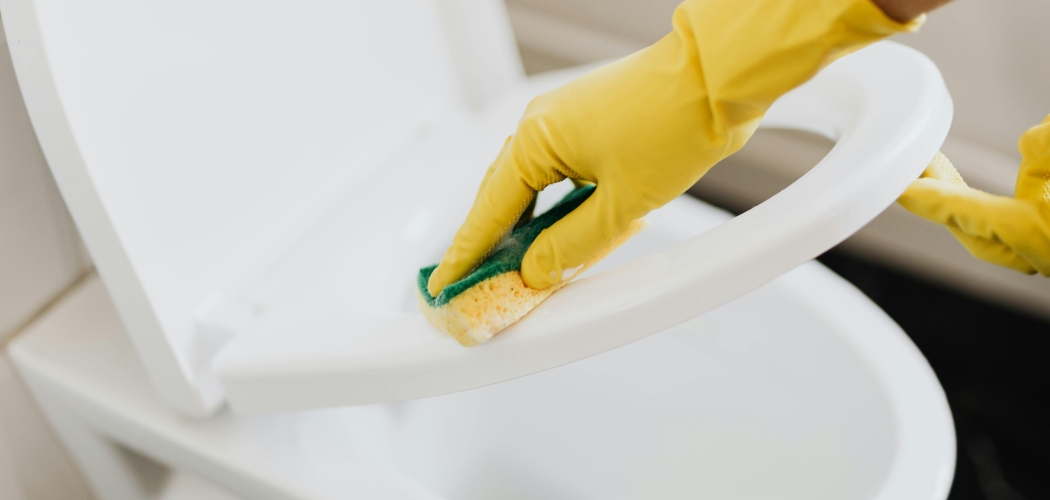Removing poop stains from a toilet seat can be a daunting task, but it is essential for maintaining hygiene and cleanliness in your bathroom. Stains can develop for a variety of reasons, from splashes during use to inadequate cleaning practices. In this guide, we will explore effective methods and tips for how to remove poop stains from toilet seat, ensuring your toilet seat remains fresh and inviting while promoting a sanitary environment. Armed with the right tools and techniques, you can tackle this task with confidence and ease.
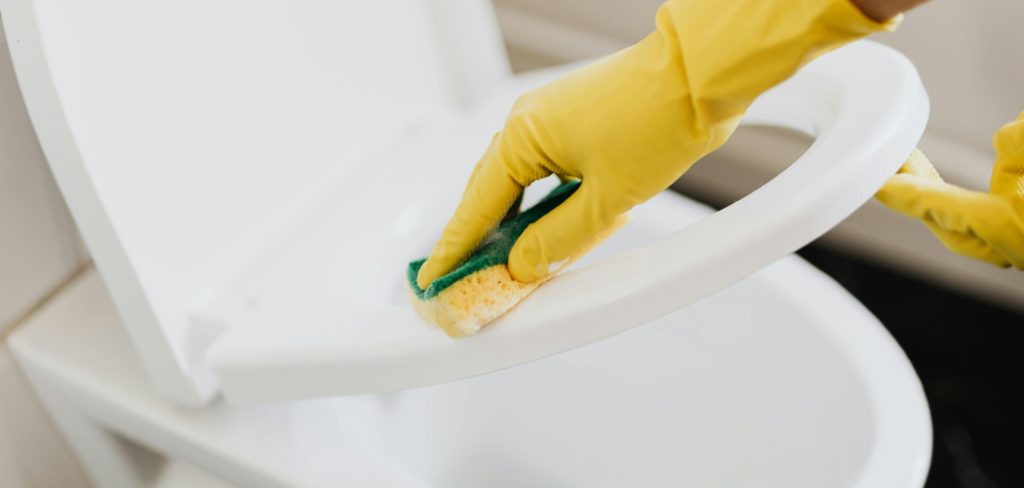
Common Occurrence of Stains on Toilet Seats
Stains on toilet seats are a common issue faced in many households. They can arise from various sources, including splashes from toilet use, remnants from poor wiping techniques, or the accumulation of bacteria and grime over time. Additionally, certain cleaning products can sometimes react with biological materials, resulting in stubborn discolorations. These stains not only compromise the appearance of your toilet but can also contribute to unpleasant odours and unsanitary conditions. Regular maintenance and cleaning can help mitigate the frequency of these stains, ensuring your toilet seat stays clean and hygienic.
Materials Needed for Cleaning Toilet Seat Stains
To effectively remove poop stains from your toilet seat, it’s important to gather the right materials before you begin. Here’s a list of essential items you’ll need for the cleaning process:
- Rubber Gloves: To protect your hands from harmful bacteria and cleaning agents.
- Paper Towels or Microfiber Cloths: For wiping away stains and applying cleaning solutions.
- All-Purpose Cleaner or Disinfectant: A suitable cleaner will help break down stains and kill germs.
- Toilet Brush: Useful for scrubbing and reaching any stubborn areas on the toilet seat.
- Vinegar: A natural disinfectant that can help eliminate odours and remove stains.
- Baking Soda: An effective abrasive that aids in lifting tough stains without scratching the surface.
- Spray Bottle: For easily applying your cleaning solution or homemade mixtures.
- Old Toothbrush: Great for scrubbing hard-to-reach crevices and finer details.
By having these materials on hand, you can ensure a thorough and efficient cleaning process for your toilet seat.
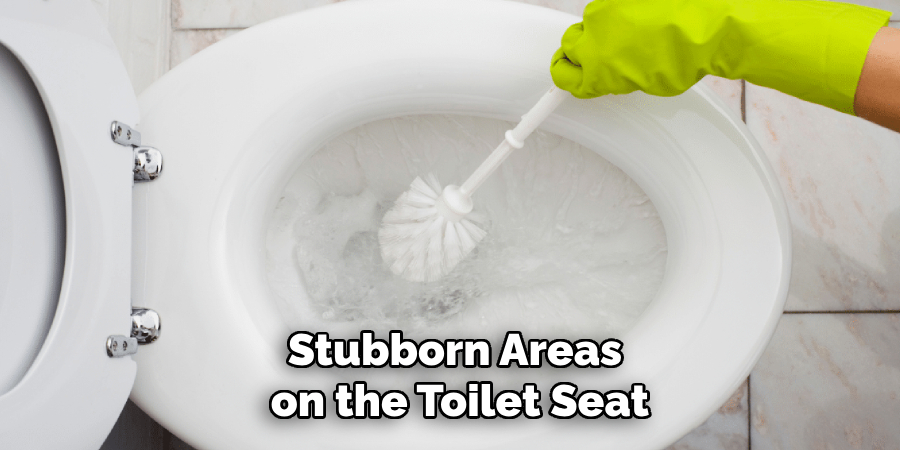
10 Methods How to Remove Poop Stains from Toilet Seat
1. Baking Soda and Water Paste
Baking soda is a common household cleaning agent known for its gentle abrasive properties, making it ideal for removing poop stains without damaging the toilet seat’s surface. To use this method, mix equal parts baking soda and water to create a thick paste. Apply the paste directly to the stained areas of the toilet seat and let it sit for about 10 to 15 minutes. The baking soda will help to lift the stains while deodorizing the area. After allowing the paste to sit, use a soft sponge or cloth to scrub the stains away, then rinse thoroughly with clean water.
2. Vinegar and Baking Soda Combination
For tougher stains, a combination of vinegar and baking soda can work wonders. Start by sprinkling baking soda over the stained areas, then spray or pour white vinegar on top. The mixture will foam as the vinegar reacts with the baking soda, helping to break down and loosen poop stains. Let the foam sit for about 5 to 10 minutes before scrubbing gently with a sponge or brush.
This method is particularly effective because vinegar has natural acidic properties that cut through grime, while baking soda provides a mild abrasive action to lift the stains. After scrubbing, wipe the area clean with a damp cloth.
3. Hydrogen Peroxide and Baking Soda
Hydrogen peroxide is another powerful cleaning agent, often used for its stain-lifting and disinfecting qualities. To remove poop stains from a toilet seat, mix hydrogen peroxide with baking soda to create a paste. Apply the mixture to the stained areas and let it sit for 10 minutes. Hydrogen peroxide not only works to remove the stains but also disinfects the surface, eliminating bacteria and odors. After the solution has worked its magic, scrub the area gently with a brush or cloth, then wipe away any residue with a clean, damp cloth.
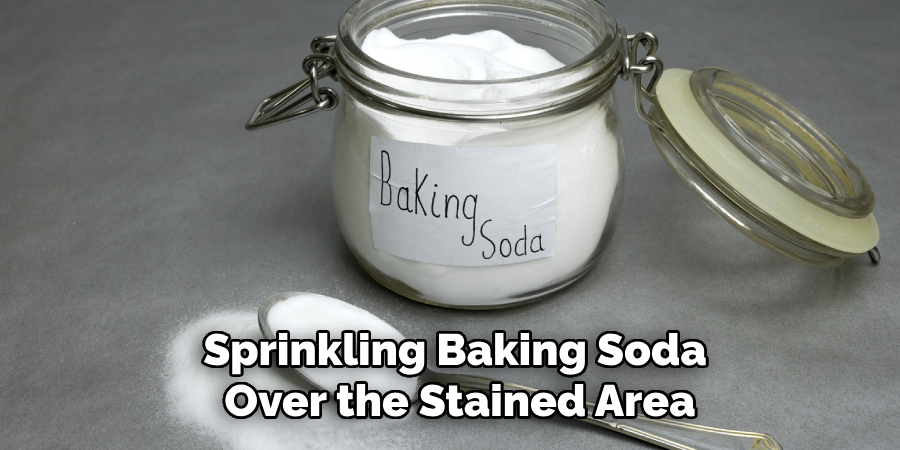
4. Lemon Juice and Baking Soda
Lemon juice is a natural bleaching agent, and when combined with baking soda, it creates a powerful stain remover that’s also safe for use on toilet seats. Squeeze fresh lemon juice onto the stained areas, then sprinkle baking soda over the top. The mixture will foam slightly as the two ingredients interact. Let the solution sit for about 10 minutes, allowing the natural acidity of the lemon to break down the stains. Afterward, use a soft sponge or cloth to scrub the area clean, then wipe with a damp cloth to remove any residue. The fresh lemon scent also helps to deodorize the toilet seat.
5. Disinfecting Wipes
For quick and easy stain removal, disinfecting wipes can be a convenient option. Most commercial wipes are pre-soaked in cleaning solutions that break down stains while also killing germs. To remove poop stains, simply wipe the affected areas of the toilet seat using the disinfecting wipe. Make sure to use a clean wipe for each pass to avoid spreading the stain. This method is particularly useful for fresh stains and is also an effective way to sanitize the toilet seat, ensuring it remains clean and germ-free. Wipes are gentle enough to use on most toilet seat surfaces without causing damage.
6. Bleach Solution
Bleach is one of the most powerful cleaning agents available for removing tough stains and disinfecting surfaces. However, it should be used cautiously, especially on toilet seats that may be made of plastic or colored materials, as bleach can cause fading. To remove poop stains, dilute a small amount of bleach (about one tablespoon) in a gallon of water. Use a cloth or sponge soaked in the solution to wipe down the stained areas of the toilet seat. Let the bleach sit for a few minutes to break down the stains, then rinse thoroughly with water to remove any remaining bleach residue. Ensure the bathroom is well-ventilated when using bleach.

7. Magic Eraser Sponge
A Magic Eraser sponge is a highly effective tool for removing stains without the need for harsh chemicals. Made from melamine foam, these sponges work like fine sandpaper, gently scraping away stains and dirt. To use, wet the Magic Eraser with water, squeeze out any excess liquid, and gently scrub the stained areas of the toilet seat. The eraser will gradually lift the poop stains without damaging the surface. This method is ideal for both fresh and older, more stubborn stains.
After scrubbing, wipe the seat with a clean cloth to remove any residue from the sponge.
8. Toilet Seat Cleaner with Enzymes
For those who prefer a specialized cleaner, enzyme-based toilet seat cleaners are designed specifically to break down organic stains like poop. These cleaners contain natural enzymes that target and digest the organic matter in stains, making them particularly effective for tough or old stains. To use, spray the cleaner directly onto the stained areas and let it sit for the recommended time, usually about 10 minutes.
Afterward, wipe the seat clean with a damp cloth. Enzyme cleaners are also gentle on the surface, making them safe for regular use without damaging the toilet seat.
9. Dish Soap and Warm Water
For lighter stains or routine cleaning, a solution of dish soap and warm water can be surprisingly effective. Dish soap is formulated to break down grease and organic materials, making it suitable for removing poop stains. To use this method, fill a small bucket or bowl with warm water and add a few drops of dish soap. Soak a sponge or cloth in the soapy water and gently scrub the stained areas of the toilet seat.
This method works well for fresh stains and helps maintain the overall cleanliness of the toilet seat. Once the stains are removed, wipe the seat with a clean, damp cloth to remove any soap residue.
10. Toothpaste and Toothbrush
Toothpaste, especially those with baking soda as an ingredient, can be used as a mild abrasive to lift poop stains from toilet seats. Apply a small amount of toothpaste to the stained areas and use an old toothbrush to scrub the stains in a circular motion. The mild abrasiveness of the toothpaste will help lift the stains without scratching the surface of the toilet seat. After scrubbing, wipe the seat clean with a damp cloth to remove the toothpaste residue. This method is ideal for small stains or areas that require a gentle touch.
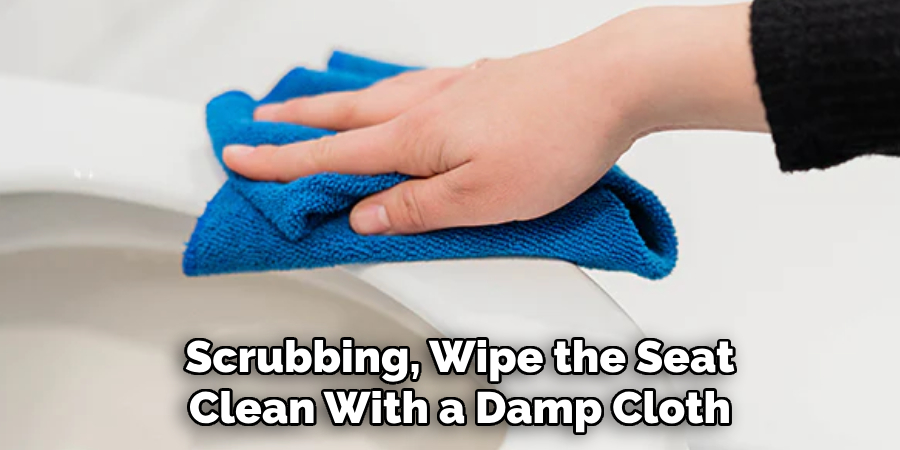
Conclusion
Effectively removing poop stains from toilet seats is essential for maintaining cleanliness and hygiene in any bathroom. By using a variety of methods, ranging from natural solutions like lemon juice and baking soda to commercial products such as disinfecting wipes and enzyme cleaners, it is possible to find an approach that suits individual preferences and needs. Regular cleaning not only helps in keeping the toilet seat looking fresh but also contributes to a healthier environment. Thanks for reading, and we hope this has given you some inspiration on how to remove poop stains from toilet seat!

